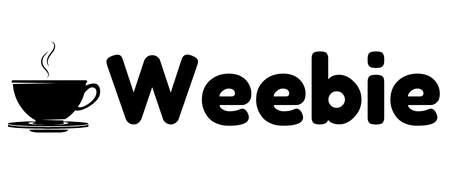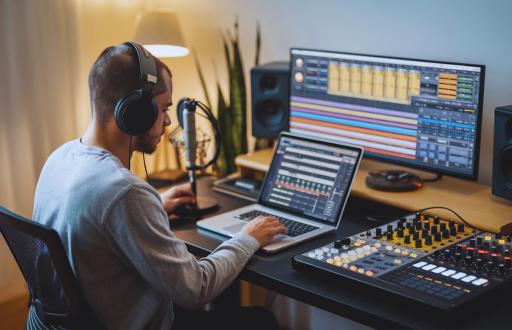In the vast and dynamic realm of music production, the Digital Audio Workstation (DAW) serves as the essential hub for creativity and innovation. For aspiring music producers, the selection of the right DAW can often feel like standing at the edge of a vast ocean, with waves of choices crashing around you. Each DAW presents its own unique features, workflows, and learning curves, making the decision both exciting and daunting. Fear not, for this comprehensive guide will illuminate the top 10 DAWs that cater specifically to beginners, ensuring you embark on your musical journey equipped with the right tools to unleash your creativity.
1. GarageBand: The Gateway to Music Production

Let’s begin our exploration with GarageBand, Apple’s flagship music production software that has become synonymous with beginner-friendly interfaces. This DAW is not just a tool; it’s a gateway into the world of music creation. With its intuitive design, GarageBand invites users to dive headfirst into the creative process without the overwhelming complexity often associated with professional software.
Features and Benefits
GarageBand boasts a plethora of features that make it an ideal starting point for novice producers. The software comes pre-loaded with a vast library of virtual instruments, loops, and samples, allowing you to experiment with different sounds and styles. Whether you’re crafting catchy pop melodies or intricate electronic beats, GarageBand provides the tools you need to bring your ideas to life.
One of the standout features of GarageBand is its Smart Instruments. These allow users to create music even if they have no prior experience with traditional instruments. For instance, the Smart Drums feature lets you tap out a rhythm, and the software will generate a full drum track based on your input. This level of accessibility is what makes GarageBand a favorite among beginners.
Conclusion
In summary, GarageBand is a fantastic entry point for anyone looking to dip their toes into music production. Its user-friendly interface, combined with a rich array of features, makes it a go-to choice for Mac users. Plus, the fact that it’s free adds to its appeal, allowing you to start creating music without any financial commitment.
2. FL Studio: The Beatmaker’s Playground
Next on our list is FL Studio, a DAW that has garnered a cult following among music producers, particularly in the electronic and hip-hop genres. Known for its vibrant interface and powerful capabilities, FL Studio is more than just a software; it’s a creative playground where ideas can flourish.
Features and Benefits
FL Studio’s step sequencer is one of its most celebrated features, allowing users to create beats with ease. The piano roll is equally impressive, providing a visual representation of your MIDI notes that makes composing melodies and harmonies a breeze. The drag-and-drop functionality further enhances the user experience, enabling you to quickly arrange and manipulate your sounds.
One of the most appealing aspects of FL Studio is its lifetime free updates. Once you purchase the software, you’ll receive all future updates at no additional cost, ensuring that you always have access to the latest features and improvements. This commitment to continuous development has solidified FL Studio’s reputation as a reliable choice for both beginners and seasoned professionals.
Conclusion
In conclusion, FL Studio is a powerhouse that offers a wealth of features tailored to the needs of beginner music producers. Its intuitive interface, combined with a robust community of users and resources, makes it an excellent choice for those looking to explore the world of music production.
3. Ableton Live Lite: The Performer’s Choice
For those who crave a blend of performance and production, Ableton Live Lite is a fantastic option. This streamlined version of the full Ableton Live software retains the core functionalities that make it a favorite among live performers and studio producers alike.
Features and Benefits
Ableton Live Lite introduces users to the unique session view, which allows for non-linear composition and live performance. This feature is particularly beneficial for those who enjoy improvisation and experimentation. The drag-and-drop interface is incredibly intuitive, making it easy to experiment with loops and samples.
While Ableton Live Lite has some limitations compared to its full version, it still offers a solid set of features for beginners. The built-in instruments and effects provide a great starting point for creating music, and the software’s compatibility with a wide range of hardware controllers enhances the overall experience.
Conclusion
In summary, Ableton Live Lite is an excellent choice for beginners who are interested in both music production and live performance. Its unique features and intuitive interface make it a versatile tool that can grow with you as your skills develop.
4. Reaper: The Customizable Powerhouse
Reaper is a hidden gem in the world of DAWs, often overlooked by beginners but highly regarded by those who appreciate its flexibility and power. This software is known for its affordability and extensive customization options, making it a favorite among producers who want to tailor their workflow to their specific needs.
Features and Benefits
One of the standout features of Reaper is its modular design, which allows users to customize the interface and functionality to suit their preferences. This means you can create a workspace that feels intuitive and efficient for your unique style of music production. The software supports a wide range of plugins and virtual instruments, giving you the freedom to expand your sonic palette as you grow.
Reaper also offers a generous free trial period, allowing you to explore its capabilities without any financial commitment. The learning curve may be steeper than some other DAWs, but the wealth of online resources, tutorials, and an active community can help you overcome any challenges you encounter.
Conclusion
In conclusion, Reaper is an excellent choice for beginners who value customization and flexibility. Its powerful features and affordability make it a worthy investment for those looking to dive deep into music production.
5. Logic Pro X: The Professional’s Choice

If you’re ready to take a step up from GarageBand, Logic Pro X is the natural progression for Mac users. This professional-grade DAW offers an extensive library of sounds, plugins, and advanced features that can elevate your productions to new heights.
Features and Benefits
Logic Pro X is packed with features that cater to both beginners and experienced producers. The software includes a vast collection of virtual instruments, from realistic pianos to cutting-edge synthesizers, allowing you to create a wide range of musical styles. The Flex Time and Flex Pitch features enable you to manipulate audio with precision, making it easy to correct timing and pitch issues.
The user interface is sleek and organized, making it easy to navigate through your projects. Additionally, Logic Pro X supports a variety of third-party plugins, giving you the flexibility to expand your sound library as you develop your skills.
Conclusion
In summary, Logic Pro X is a powerful DAW that offers a wealth of features for those serious about music production. While it comes with a price tag, the depth of tools available makes it a worthy investment for aspiring producers looking to create professional-quality music.
6. Cubase Elements: The MIDI Maestro
Cubase Elements is a streamlined version of the renowned Cubase software, perfect for those just starting out in music production. Known for its exceptional MIDI capabilities, Cubase Elements allows for intricate compositions and arrangements.
Features and Benefits
Cubase Elements features a clean and organized user interface, making it easy for beginners to navigate through their projects. The software includes a variety of virtual instruments and effects, providing a solid foundation for your productions. The MIDI editing capabilities are particularly impressive, allowing you to create complex arrangements with ease.
Cubase Elements also offers a range of built-in tools for audio editing and mixing, ensuring that you have everything you need to produce high-quality music. The software’s compatibility with a wide range of hardware controllers enhances the overall experience, making it a versatile choice for beginners.
Conclusion
In conclusion, Cubase Elements is an excellent choice for aspiring producers who want to focus on MIDI composition and arrangement. Its user-friendly interface and robust feature set make it a great option for those looking to develop their skills in music production.
7. Studio One Prime: The Streamlined Solution

Studio One Prime offers a unique approach to music production with its single-window workspace. This DAW is designed to streamline your workflow, allowing you to focus on creativity rather than getting lost in menus.
Features and Benefits
Studio One Prime features a drag-and-drop functionality that is a game-changer for beginners. You can easily import audio and MIDI files, arrange your tracks, and apply effects with minimal effort. The built-in effects and instruments provide a solid foundation for your productions, allowing you to create music right out of the box.
The software also includes a range of tools for mixing and mastering, ensuring that you can produce polished tracks without needing additional software. The intuitive interface makes it easy to learn, making Studio One Prime a great choice for those new to music production.
Conclusion
In summary, Studio One Prime is an excellent option for beginners who want a streamlined and efficient music production experience. Its user-friendly design and powerful features make it a great choice for those looking to unleash their creativity.
8. Soundtrap: The Collaborative Cloud-Based DAW
For those who prefer a cloud-based solution, Soundtrap is an innovative DAW that allows you to create music directly in your browser. Its collaborative features enable you to work with others in real-time, making it an excellent choice for remote collaborations.
Features and Benefits
Soundtrap offers a user-friendly interface that is perfect for beginners. The software includes a variety of loops and instruments, allowing you to experiment with different sounds and styles. The collaborative aspect of Soundtrap is particularly appealing, as it allows you to invite friends or fellow musicians to join your projects, making music creation a shared experience. You can chat, comment, and edit together in real-time, fostering a sense of community and collaboration that is often missing in traditional DAWs.
Additionally, Soundtrap is accessible from any device with an internet connection, meaning you can produce music on the go. The platform also offers a range of built-in effects and tools for mixing and mastering, ensuring that your tracks sound polished and professional.
Conclusion
In conclusion, Soundtrap is a fantastic choice for beginners who value collaboration and accessibility. Its cloud-based nature and user-friendly interface make it easy to dive into music production, while its collaborative features enhance the creative process.
9. BandLab: The Social Music Production Platform
Similar to Soundtrap, BandLab is a free, cloud-based DAW that caters to beginners. It offers a simple interface and a range of tools for recording, editing, and mixing, making it an excellent choice for those new to music production.
Features and Benefits
BandLab stands out with its social aspect, allowing users to share their music with a community of creators. You can receive feedback, collaborate with others, and even participate in challenges to hone your skills. The platform includes a variety of virtual instruments and loops, providing a solid foundation for your productions.
The mobile app allows you to create music on the go, making it a versatile option for aspiring producers. The intuitive interface ensures that you can focus on your creativity without getting bogged down by complicated menus.
Conclusion
In summary, BandLab is an excellent choice for beginners who want to explore music production in a social and collaborative environment. Its user-friendly design and community features make it a great option for those looking to connect with other musicians.
10. Tracktion T7: The Feature-Rich Free DAW
Last but not least, Tracktion T7 is a free DAW that doesn’t skimp on features. With unlimited audio and MIDI tracks, it’s perfect for those who want to experiment without limitations.
Features and Benefits
Tracktion T7 offers a powerful set of editing tools that make it easy to manipulate audio and MIDI. The intuitive interface allows you to navigate your projects with ease, and the software supports a wide range of plugins and virtual instruments, giving you the freedom to expand your sound library.
The active community surrounding Tracktion provides support and resources to help you get started, making it an excellent choice for beginners. The software’s flexibility and robust feature set ensure that you can grow as a producer without outgrowing your DAW.
Conclusion
In conclusion, Tracktion T7 is a fantastic option for beginners who want a feature-rich DAW without the financial commitment. Its powerful tools and user-friendly design make it a great choice for those looking to explore the world of music production.
Conclusion
Choosing the right DAW is a pivotal step in your music production journey. Each of the options listed above offers unique features tailored to beginners, ensuring that you can find the perfect fit for your creative style. Whether you prefer a cloud-based solution or a traditional software installation, there’s a DAW out there that will help you bring your musical visions to life. So, dive in, explore, and let your creativity flow!
FAQ
What is a DAW?
A Digital Audio Workstation (DAW) is software used for recording, editing, and producing audio files. It serves as the central hub for music production, allowing users to manipulate sound and create music.
Do I need expensive equipment to start music production?
No, you don’t need expensive equipment to start. Many DAWs offer free versions or trials, and you can begin with basic headphones and a computer. As you progress, you can invest in better equipment.
Can I use a DAW on my tablet or smartphone?
Yes, many DAWs have mobile versions or cloud-based platforms that allow you to create music on your tablet or smartphone. Apps like GarageBand, BandLab, and Soundtrap are great options for mobile music production.
How do I choose the right DAW for me?
Consider your music style, budget, and whether you prefer a user-friendly interface or advanced features. Trying out free trials can help you determine which DAW feels right for your workflow.
Is it possible to collaborate with others using a DAW?
Absolutely! Many DAWs, especially cloud-based ones like Soundtrap and BandLab, offer collaborative features that allow you to work with other musicians in real-time, making it easy to create music together regardless of location.






